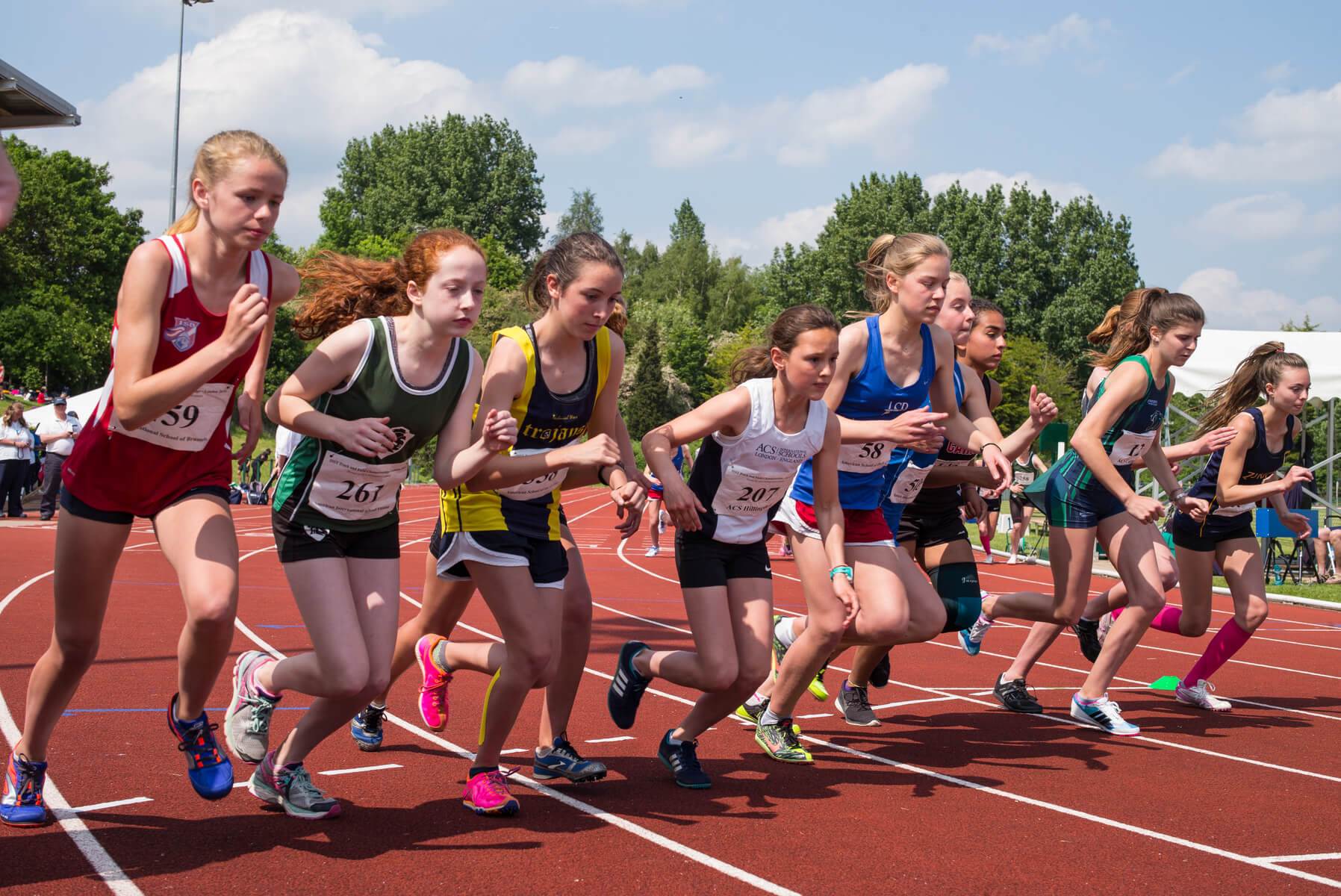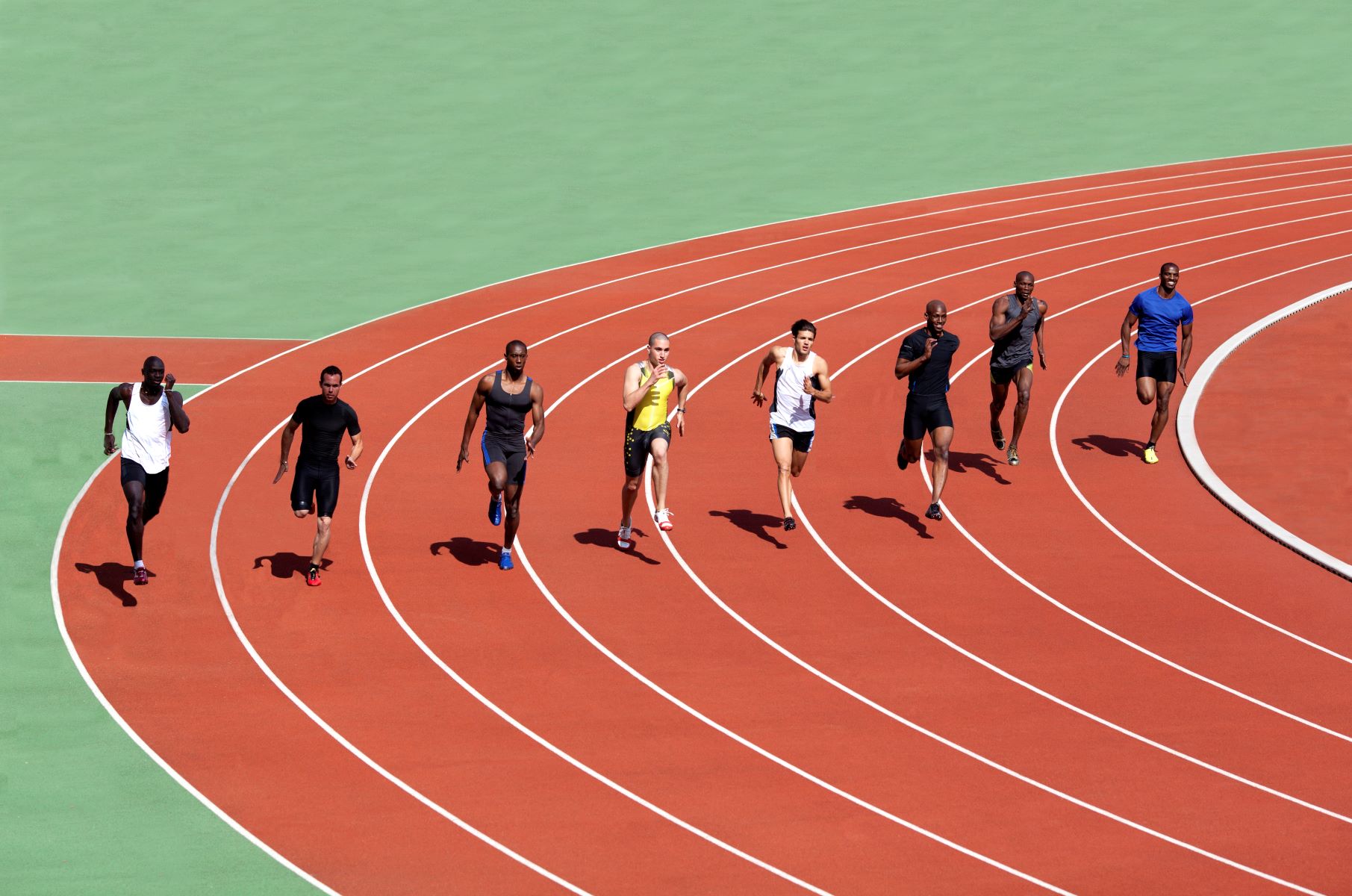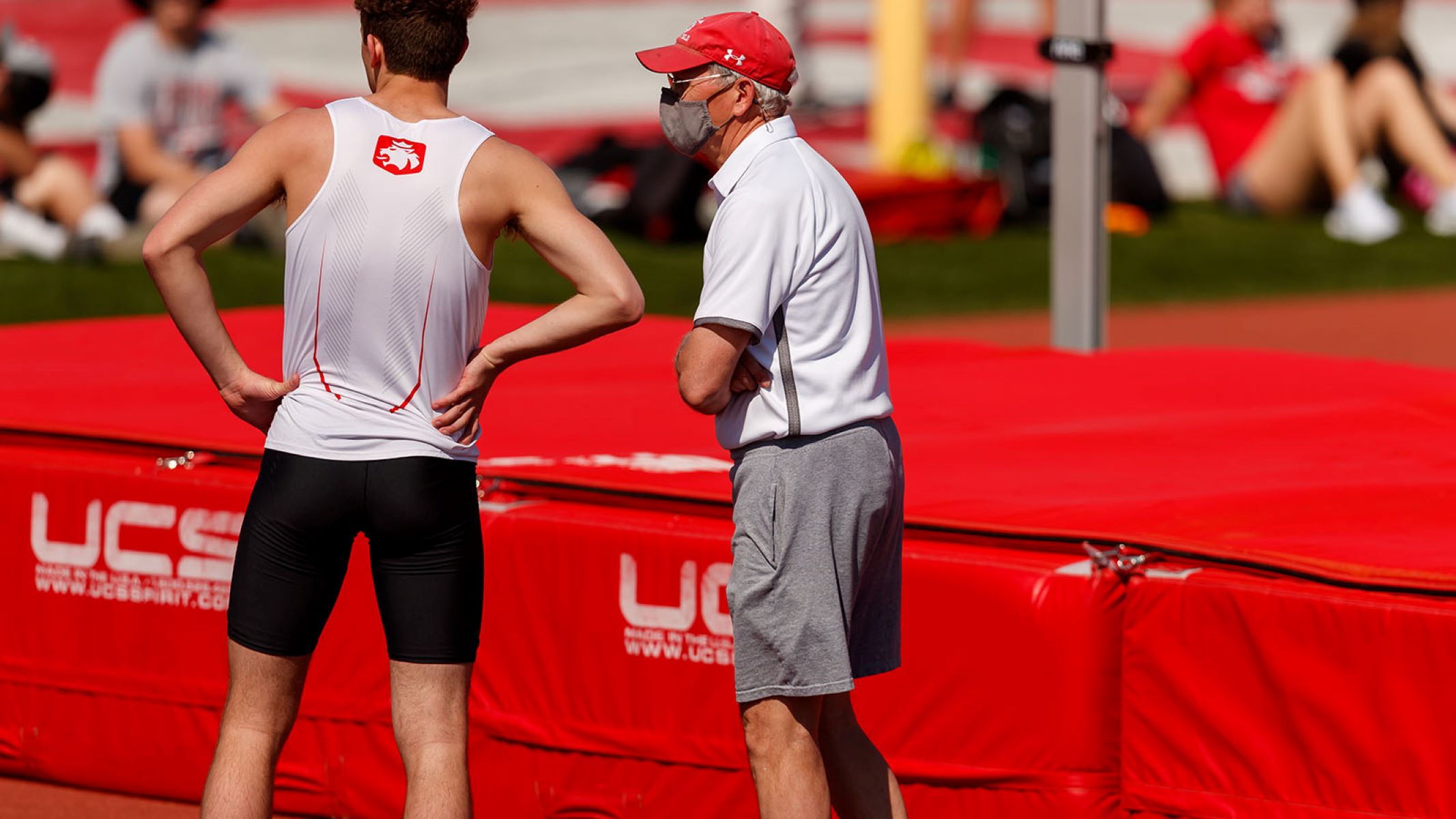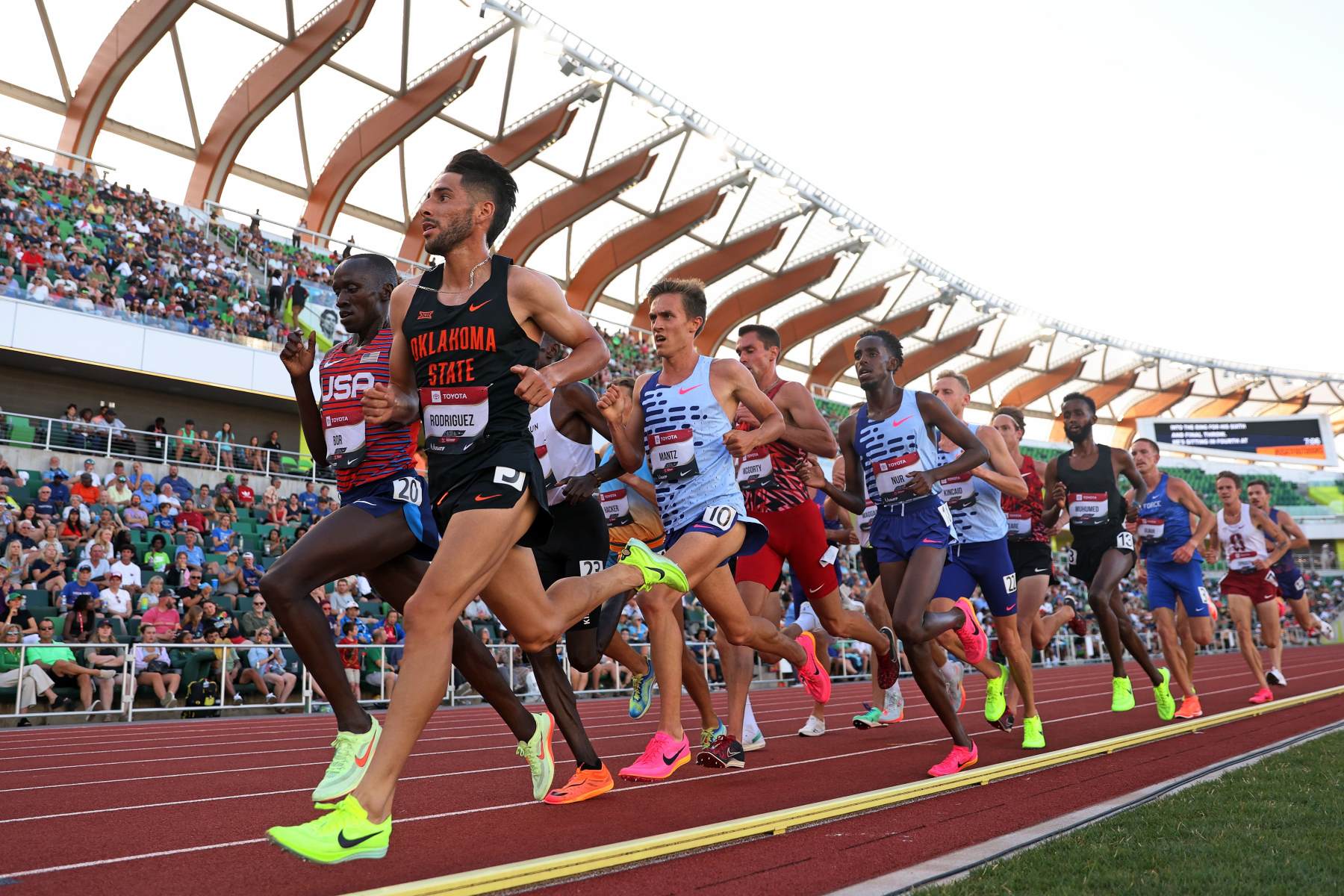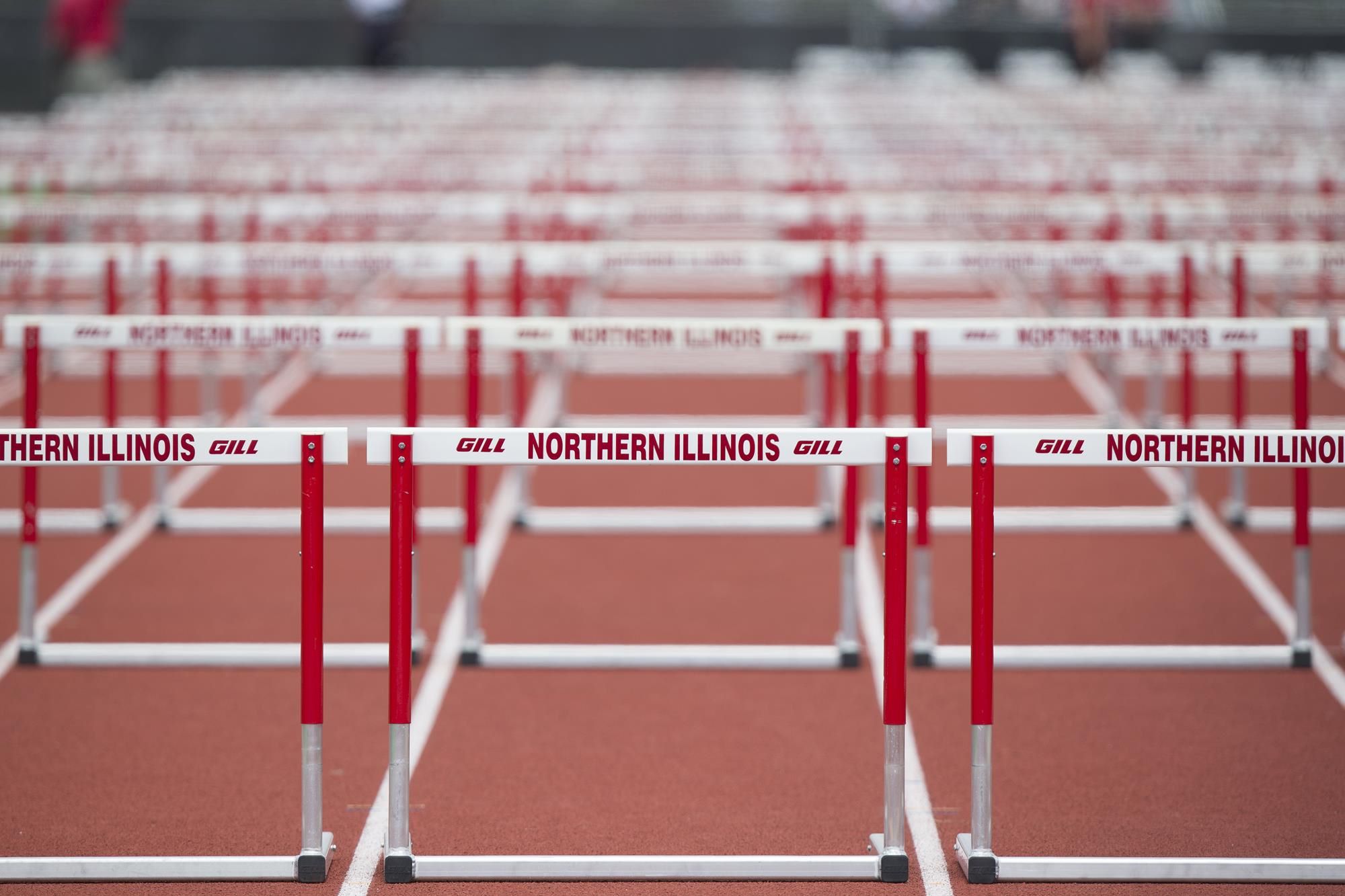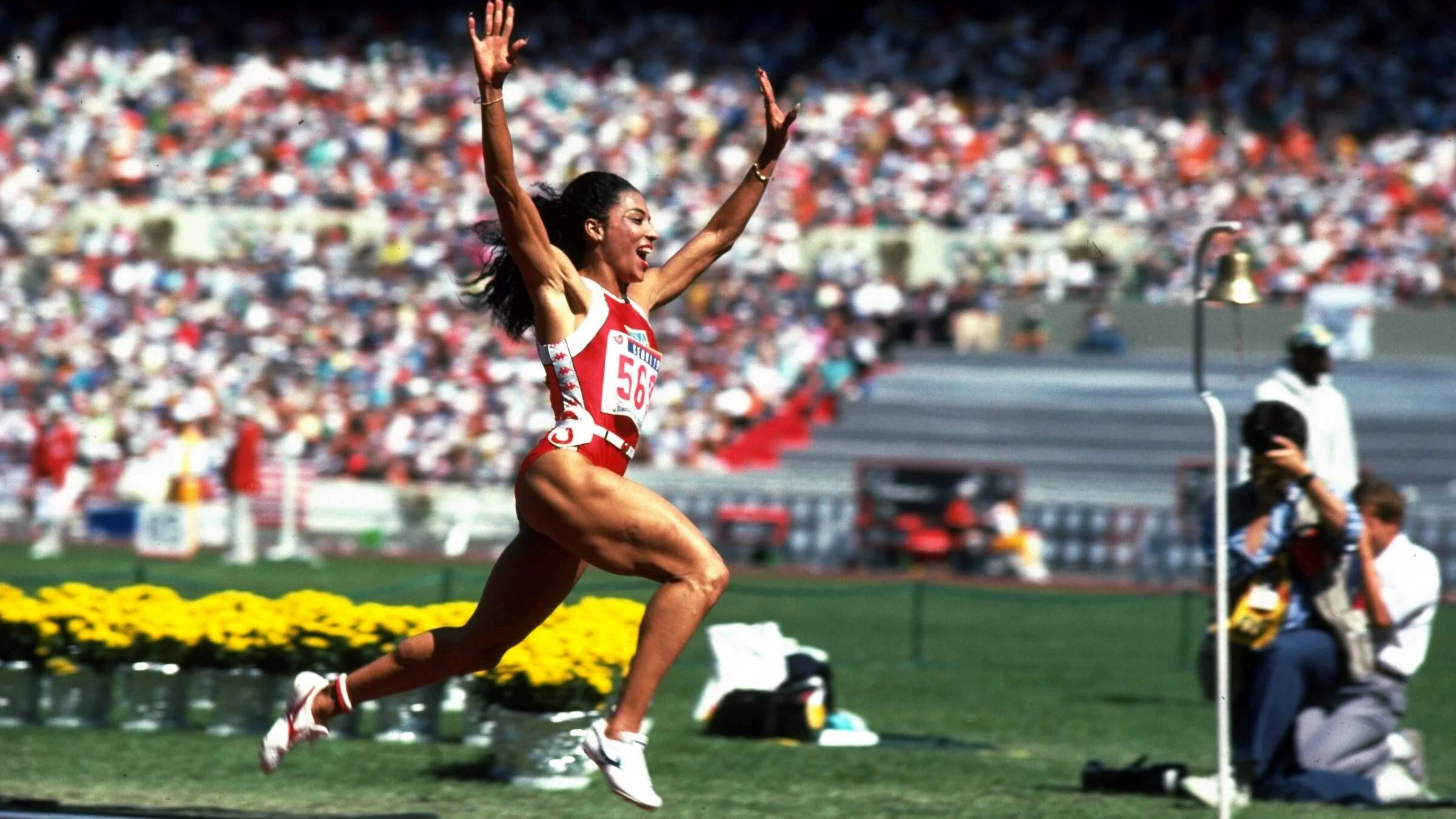Home>Misc>Featured>How Long Does It Take To Build A Track And Field?


Featured
How Long Does It Take To Build A Track And Field?
Modified: January 2, 2024
Find out how long it takes to build a track and field facility from start to finish in this featured article. Get insights on the construction process and timeline.
Introduction
Building a track and field is a complex process that requires careful planning, expertise, and attention to detail. Whether it’s for a school, university, or professional sports facility, constructing a track and field is a significant undertaking with several factors influencing the timeline and success of the project.
A track and field facility is not just a running surface; it includes various field event areas such as long jump pits, high jump areas, throwing circles, and pole vaulting pits. Additionally, there are essential amenities to consider, such as seating, lighting, and equipment storage.
Before diving into the various stages of construction, it’s important to understand that the time it takes to build a track and field can vary depending on numerous factors. These factors include the size and complexity of the facility, the weather conditions during construction, and the availability of resources and labor.
In this article, we will explore the essential components of constructing a track and field and delve into the factors that can affect the overall timeline of the project. From the initial planning and design phase to the finishing touches and inspection, we will uncover each step of the construction process, providing valuable insights for those interested in undertaking such a project.
Factors Affecting the Time to Build a Track and Field
Several factors can significantly impact the time it takes to construct a track and field facility. Understanding these factors is crucial for effective project planning and ensuring a smooth and timely completion. Let’s take a closer look at some key elements that can influence the overall timeline:
- Size and Complexity: The size and complexity of the track and field facility play a significant role in determining the construction timeline. Larger facilities with multiple tracks and a greater number of field event areas will require more time to complete. Similarly, the inclusion of additional amenities like seating, landscaping, and lighting can add complexity and extend the construction schedule.
- Permitting and Approvals: Obtaining the necessary permits and approvals from local authorities is an essential step in the construction process. The time required for this step can vary depending on the jurisdiction and the efficiency of the permitting process. It’s crucial to allocate sufficient time for the review and approval of construction plans to avoid delays.
- Weather Conditions: Weather conditions can have a significant impact on the construction timeline, especially for outdoor track and field facilities. Inclement weather, such as heavy rain or extreme heat, can delay earthwork, asphalt paving, and other construction activities. It’s important to consider seasonal weather patterns and plan construction activities accordingly to minimize potential delays.
- Availability of Resources and Labor: The availability of resources, materials, and skilled labor can greatly affect the construction timeline. Delays may occur if certain materials are not readily available or if there is a shortage of experienced contractors or specialized equipment. Ensuring a reliable supply chain and establishing clear communication with contractors and suppliers can help mitigate these challenges.
- Coordination with Other Projects: If the construction of the track and field facility is part of a larger development or renovation project, coordination with other contractors and construction activities becomes crucial. Ensuring effective communication and scheduling with other teams working on the site can help avoid conflicts and streamline the overall construction process.
By considering these factors and implementing effective project management strategies, it is possible to minimize potential delays and complete the construction of a track and field facility within the estimated timeline.
Planning and Design Phase
The planning and design phase is a crucial first step in building a track and field facility. During this phase, careful consideration is given to various factors, such as site selection, layout design, and budget allocation. Let’s explore the key aspects of the planning and design phase:
Site Selection: The site selection process involves identifying a suitable location for the track and field facility. Factors to consider include proximity to the intended users, accessibility, available land area, and environmental considerations. The chosen site should have sufficient space to accommodate the necessary tracks, field event areas, seating, parking, and other amenities.
Layout Design: The layout design entails determining the placement and configuration of the track, field event areas, and associated amenities. Design considerations include adhering to the required dimensions and specifications outlined by sports governing bodies, optimizing the use of space, and ensuring proper line of sight for spectators. Collaborating with architects, engineers, and track and field experts can help create an efficient and visually appealing layout.
Budget Allocation: Developing a realistic budget for the project is essential. This includes estimating the costs of land acquisition, construction materials, labor, equipment, and any additional amenities. It is imperative to consider both initial construction costs and long-term maintenance expenses to ensure the facility’s sustainability.
Engaging Stakeholders: During the planning and design phase, it is crucial to involve relevant stakeholders, such as school administrators, coaches, athletes, and community members. Gathering input from these individuals can help identify specific needs, preferences, and potential issues that should be addressed in the design. Engaging stakeholders early on fosters ownership and a sense of community in the project.
Seeking Professional Expertise: Engaging professional services, such as architects, engineers, and landscape designers, is highly recommended during the planning and design phase. These specialists possess the knowledge and experience to create functional and aesthetically pleasing track and field facility designs that comply with safety standards and governing regulations.
By dedicating sufficient time and resources to the planning and design phase, the foundation for a successful track and field facility construction project can be laid. This phase sets the stage for subsequent stages, ensuring a well-thought-out and efficient implementation process.
Site Preparation
Once the planning and design phase is complete, the next step in building a track and field facility is site preparation. This stage involves preparing the chosen location to accommodate the tracks, field event areas, and other required amenities. Let’s delve into the key aspects of site preparation:
Clearing and Grading: The first step in site preparation is clearing the land of any existing structures or vegetation. This includes removing trees, rocks, and other obstructions that would hinder the construction process. After clearing, the next step is grading the land to ensure a level and compacted surface for the tracks and field event areas. Excavation may be required to adjust the topography of the site to meet the design requirements.
Drainage and Irrigation: Adequate drainage and irrigation systems are essential for maintaining the longevity and functionality of the track and field facility. Proper drainage prevents water buildup on the surface, which can lead to slippery conditions and damage to the tracks. During site preparation, drainage systems are installed, which may include underground pipes, catch basins, and retention ponds. Additionally, irrigation systems are implemented to ensure the proper hydration of the grass or synthetic turf in field event areas.
Access and Utilities: Site preparation also involves establishing access points, such as roads and pathways, to the facility. These access points should be designed to accommodate the movement of construction vehicles, as well as provide convenient entry and exit for athletes, officials, and spectators once the facility is operational. Additionally, utilities such as electricity, water, and sewer connections need to be planned and installed to support the facility’s operations.
Erosion Control: To prevent erosion and sediment runoff, erosion control measures must be implemented during site preparation. This can include the installation of erosion control blankets, silt fences, and sediment basins. These measures help protect the surrounding environment and ensure compliance with environmental regulations.
Site Security: Depending on the location and size of the track and field facility, security measures may need to be implemented during site preparation. This can include the installation of fencing, gates, security cameras, and lighting to ensure the safety and security of the facility when it is completed and operational.
Effective site preparation sets the stage for subsequent construction activities and ensures a solid foundation for the track and field facility. By carefully addressing these aspects, potential issues can be mitigated, and the construction process can proceed smoothly.
Construction of Track Surface
One of the critical components of building a track and field facility is the construction of the track surface itself. The track surface plays a vital role in providing a safe and suitable running surface for athletes. Here are the key aspects involved in the construction of the track surface:
Base Preparation: Before the track surface can be installed, the base preparation is necessary. This involves laying a stable foundation that provides proper support for the track surface. The base is typically made up of layers of compacted materials, such as aggregate and asphalt. The thickness and composition of the base will depend on factors such as climate, anticipated usage, and budget limitations.
Surface Material: The next step involves applying the surface material to the prepared base. There are different options for track surface materials, including asphalt and synthetic materials like polyurethane or latex. Synthetic surfaces are widely used due to their durability, shock absorption, and ability to withstand varying weather conditions. The selected surface material should meet the specifications set by sports governing bodies to ensure optimal performance and safety for athletes.
Line Markings: Once the track surface is installed, the next step is to apply the necessary line markings. These markings include the starting lines, lane markings, exchange zones for relay events, and other required markings as per the governing regulations. The markings are typically painted onto the track surface using specialized materials that are durable and provide good visibility to athletes and officials.
Surface Testing: Once the track surface and line markings are in place, it is crucial to conduct thorough testing to ensure that the surface meets the required standards. This involves testing the surface for proper shock absorption, traction, and uniformity. Testing may also include measuring the track’s dimensions to ensure accuracy and compliance with regulations.
Maintenance Considerations: Maintenance of the track surface is of utmost importance to ensure its longevity and performance. Regular cleaning, inspecting, and repairing any damages or wear and tear are essential. It is recommended to establish a maintenance schedule that includes cleaning debris, removing any standing water, and addressing any issues promptly to prevent further damage.
The construction of the track surface is a critical phase in building a track and field facility. By employing experienced contractors and adhering to the necessary standards, a high-quality and resilient track surface can be created, providing athletes with a safe and optimal running experience.
Installation of Field Event Areas
Alongside the construction of the track surface, the installation of field event areas is a crucial aspect of building a comprehensive track and field facility. These areas provide spaces for activities such as long jump, high jump, throwing events, and pole vaulting. Let’s explore the key considerations and steps involved in the installation of field event areas:
Long Jump and Triple Jump Pits: The long jump and triple jump pits require careful construction to ensure a safe and functional space for athletes. The installation involves excavating the pit area, creating a proper drainage system, and filling the pit with appropriate materials, such as sand or synthetic surfaces, with sufficient depth to facilitate proper landing and performance during jumps. Landing board and foul line markings are also installed to delineate the area for accurate jumping measurements.
High Jump Areas: High jump areas consist of a landing pad and an upright, adjustable crossbar. The installation involves preparing a level area for the landing pad, ensuring suitable drainage, and positioning the take-off area accurately. Standards and regulations for high jump area dimensions and materials must be followed to ensure the safety and fairness of the event.
Throwing Circles: Throwing circles are essential for various throwing events such as shot put, discus, and hammer throw. These areas require careful excavation and compaction to create a stable and uniform surface. The installation involves the positioning of the throwing circle and the implementation of proper drainage systems to prevent water buildup. The throwing sector lines and markings are also applied to ensure accurate measurements and fair competition.
Pole Vaulting Pits: Pole vaulting pits are specialized areas that require precise construction. The installation involves creating a deep, soft landing area filled with materials like foam or sand to absorb the impact. The pit requires proper drainage to maintain its functionality over time. Standards and guidelines for the pole vault runway, box, and landing area dimensions must be followed to ensure athlete safety and fair competition.
During the installation of field event areas, it is vital to work closely with architects, engineers, and experienced contractors who can ensure that the dimensions, materials, and specifications meet the standards set by sports governing bodies. Adequate planning, precise measurements, and attention to detail throughout the installation process are essential to create safe, high-quality field event areas for athletes to compete at their best.
Installation of Equipment and Amenities
In addition to the construction of the track surface and field event areas, the installation of equipment and amenities is a crucial step in building a fully functional and user-friendly track and field facility. Let’s explore the key considerations and steps involved in this stage:
Track Equipment: The installation of track equipment includes items such as starting blocks, hurdles, and timing systems. Starting blocks are positioned at each lane’s starting point, enabling sprinters to get a strong and efficient start. Hurdles are set up at appropriate distances for hurdle races. Timing systems, including electronic timing devices and photo-finish equipment, are installed to accurately measure race times and determine winners.
Field Event Equipment: Field event equipment installation includes implements necessary for various events, such as shot put, discus, javelin, and hammer throw. These events require specific equipment, such as throwing implements, measurement devices, and safety cages or netting. It is crucial to ensure the proper positioning of equipment and adherence to safety guidelines to create a safe and efficient environment for athletes and officials.
Seating and Spectator Amenities: Depending on the size and scope of the facility, the installation of seating areas and spectator amenities is essential to accommodate the audience. This can include grandstands, bleachers, and seating options that provide clear views of the track and field events. Additionally, amenities such as restrooms, concession stands, and first-aid stations should be strategically placed to cater to the needs of spectators and provide a comfortable and enjoyable experience.
Lighting: Adequate lighting is crucial for facilitating evening or nighttime events and ensuring the safety and visibility of athletes and spectators. Installation of appropriate lighting fixtures and systems should consider factors such as the size of the facility, the type of events being held, and compliance with lighting regulations. Properly positioned and maintained lighting can enhance the overall atmosphere and functionality of the track and field facility.
Equipment Storage and Maintenance: Alongside the installation of equipment, provisions for storage and maintenance should be in place. This includes designated storage areas for track and field equipment, as well as maintenance facilities for regular cleaning, inspection, and repairs. Having proper storage and maintenance measures in place helps prolong the lifespan of the equipment and ensures its optimal performance over time.
During the installation of equipment and amenities, it is crucial to work in collaboration with sports equipment suppliers, experienced contractors, and relevant stakeholders to ensure compliance with regulations and standards. Attention to detail, proper positioning, and regular maintenance are essential to create a safe and enjoyable environment for athletes, officials, and spectators at the track and field facility.
Finishing Touches and Inspection
As the construction of a track and field facility nears completion, the focus shifts towards adding the finishing touches and conducting a comprehensive inspection to ensure that the facility meets all quality and safety standards. Let’s explore the key aspects of this stage:
Landscaping and Beautification: To enhance the aesthetics of the facility, landscaping efforts are undertaken. This includes planting trees, shrubs, and grass in designated areas, as well as adding decorative elements such as flower beds and walkways. Landscaping not only adds visual appeal but also contributes to the overall atmosphere and functionality of the facility.
Signage and Wayfinding: Installing signage and wayfinding elements is crucial to guide athletes, officials, and spectators throughout the facility. This may include directional signs, event schedules, information boards, and safety signs. Clear and visible signage enhances the user experience and helps prevent confusion or accidents.
Final Inspections: Before the facility can be deemed operational, a thorough inspection is conducted to ensure that all construction aspects, including the track surface, field event areas, equipment, and amenities, meet the required standards and safety regulations. Inspections may be carried out by external experts or representatives from sports governing bodies to provide an unbiased assessment.
Safety Measures: As a critical consideration, the installation of safety measures is essential to protect athletes, officials, and spectators. This includes the positioning of safety netting or barriers in areas such as throwing events or pole vaulting. Adequate first-aid and medical facilities should also be available to address any injuries or emergencies that may occur during events.
Final Touch-Ups: During the inspection process, any necessary touch-ups or corrections identified are completed. This could involve repairs to the track surface, repainting of line markings, adjusting of equipment, or addressing any landscaping or aesthetic issues.
Documentation and Handover: Once all inspections are successfully completed, proper documentation is prepared, which includes records related to construction plans, permits, safety measures, and warranties. The handover of the facility to the stakeholders or operators takes place along with any necessary training on maintenance and facility operations.
By paying attention to the finishing touches and conducting a thorough inspection, the track and field facility can be finalized to meet all necessary standards and ensure a safe and enjoyable environment for all users.
Conclusion
Building a track and field facility is a complex and intricate process that requires careful planning, expertise, and attention to detail. From the initial planning and design phase to the installation of equipment and amenities, every step plays a crucial role in creating a functional, safe, and visually appealing facility.
Factors such as the size and complexity of the facility, weather conditions, availability of resources and labor, and coordination with other projects can significantly affect the overall timeline of the construction process. It is important to consider these factors and implement effective project management strategies to minimize potential delays and ensure a successful outcome.
During the planning and design phase, careful consideration should be given to site selection, layout design, and budget allocation. Engaging stakeholders and seeking professional expertise are essential for creating a well-thought-out and efficient plan.
The site preparation stage involves clearing and grading the land, implementing proper drainage and irrigation systems, establishing access points, and ensuring erosion control measures are in place. These steps provide a solid foundation for subsequent construction activities.
The construction of the track surface, installation of field event areas, and placement of equipment and amenities are key elements that contribute to the functionality and usability of the facility. Attention to detail, adherence to safety standards, and regular maintenance are crucial for creating an environment that meets the needs of athletes, officials, and spectators.
Lastly, the finishing touches, thorough inspections, and proper documentation ensure that the facility is prepared for operation, meeting all necessary standards and regulations.
Building a track and field facility is a significant undertaking, but with careful planning, expert guidance, and attention to detail, a successful outcome can be achieved. A well-designed, efficiently constructed, and properly maintained track and field facility provides a venue where athletes can thrive, spectators can enjoy the excitement of the sport, and the community can come together to celebrate athletic achievements.


